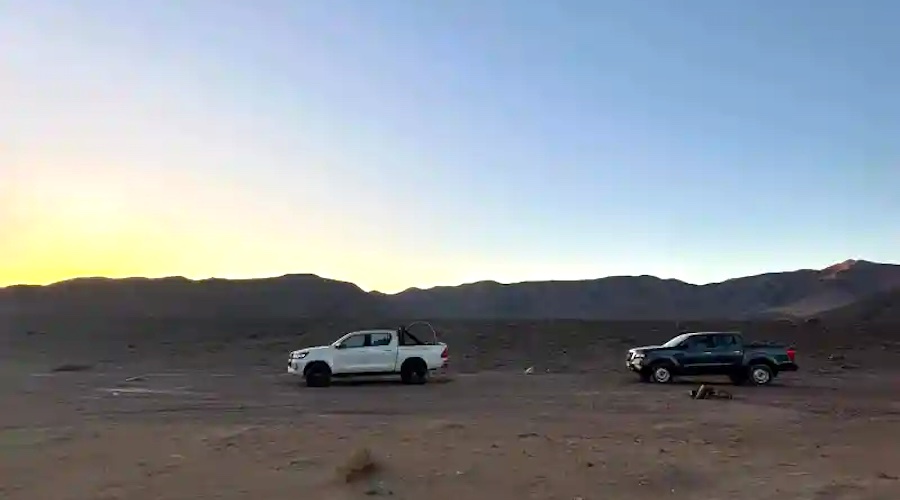Judge throws out multi-billion dollar Rio lawsuit against Vale

Rio has a mountain to climb
Rio Tinto filed suit in April for billions of dollars against Vale and BSG Resources, a company with links to diamond king Beny Steinmetz, alleging that the two companies acquired the rights to northern block of the Simandou deposit in Guinea, West Africa in December 2008 through corrupt means.
According to Reuters, US District Judge Richard Berman in Manhattan said that Rio “had waited too long to file the lawsuit” under the Racketeer Influence and Corrupt Organizations Act, which calls for a four year time limit.
Guinea is home to some of the richest and easily exploitable iron ore fields outside of Australia’s Pilbara region where Rio Tinto’s operations are centred and top producer Vale’s Brazilian home base.
Rio Tinto held the licence for the entire deposit, but was stripped of the northern blocks by a former dictator of the country, one of the poorest in Africa. BSGR acquired the concession later that year after spending $160 million exploring the property.
In 2010 BSGR sold 51% to Vale for $2.5 billion. The Rio de Janeiro-based company stopped paying after the first $500 million after missing a number of development milestones. Then the new Guinean government under Conde launched a review of all mining contracts awarded under previous regimes and launched an investigation into the Vale-BSGR joint venture.
The Guinea government withdrew the mining permit in April, accusing BSGR of obtaining its rights through corruption prompting the Rio lawsuit. In the filing Rio had alleged that BSGR paid a $200 million bribe to Guinea’s former minister using funds from Vale’s initial payment.
BSGR has denied wrongdoing and filed an arbitration request in an attempt to win compensation from the Western African nation. Steinmetz has previously called the Guinean probe’s findings a “smear campaign” against him. A separate Swiss and US probe into the corruption allegations are ongoing.
Simandou South
In May last year, the Guinea government and Rio and its partners – China’s Chalco together with the World Bank – inked a game-changing $20 billion deal for the southern section of Simandou.
The agreement calls for a new 700km railway across the country to Conakry, Guinea’s capital in the north, plus a new deep water port at a conservatively estimated cost of $7 billion; infrastructure investments that will transform the economy of the impoverished country.
Simandou with 1.6 billion tonnes of reserves and some of the highest grades in the industry (66% – 68% Fe which attracts premium pricing) has a back-of-the-envelope calculation value of more than $80 billion at today’s prices.
At full production Rio’s Simandou concession would export up to 100 million tonnes per year – compared to Rio’s total capacity at the moment of around 360 million tonnes per annum. Simandou would by itself be the world’s fifth-largest producer behind Australia’s Fortescue Metals and BHP Billiton.
Rio acquired the rights for the vast mountain deposit more than 15 years ago and has already spent more than $3 billion advancing the project. A feasibility study was due to be completed by July, but the ebola outbreak halted work at the site for months with hundreds of contract workers pulling out of the country.
But with the price of the steelmaking raw material languishing not far off decade lows around $45 a tonne on Friday and global mining companies in belt-tightening and cost cutting mode even projects like Simandou are being cautiously advanced.
Last month the government of Guinea expressed frustration at the slow pace of development at Simandou with President Alpha Conde taking a new tender for another part of the deposit slowly because “we don’t want our minerals to be put out to pasture anymore.”
Whether Guinea really has leverage to make the Anglo-Australian giant shift focus from existing operations is an open question. Even at the current development clip, it’s doubtful Simandou will ship ore before 2020 and likely only by the middle of the next decade.
Glencore was said to be eyeing the Simandou North deposit, but in the year since high-level representatives of Glencore travelled to Conakry to meet with government officials, the financial situation of the Swiss commodities trader and miner has been turned on its head. Anglo American at the time also said it has no plans to take on a project of this size.
More News
{{ commodity.name }}
{{ post.title }}
{{ post.date }}




2 Comments
PaoloUSA
This is what we need, another 100 MTpa of overcapacity. This project is dead, of course after having spend billions they have to keep up the face, but taking this project further will be the peak of no sustainability for the industry.
Kenneth Viney
IT IS EASY TO INVEST MONEY IN AFRICA, GETTING IT BACK IS TOUGH.